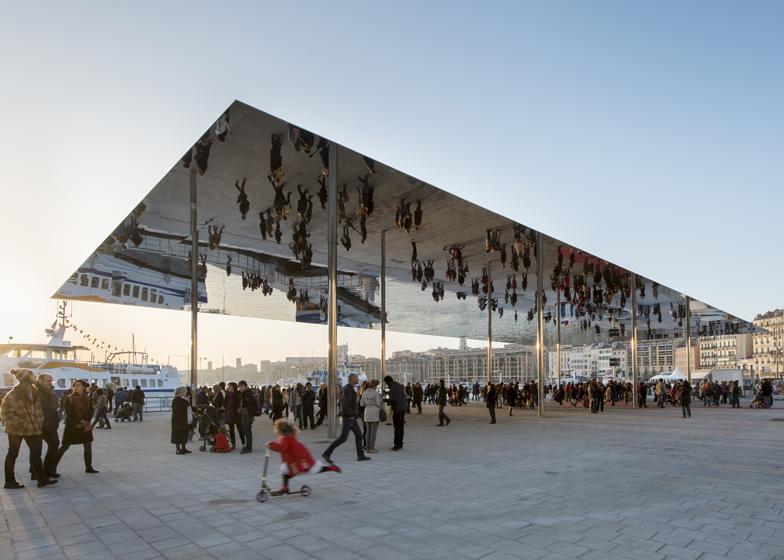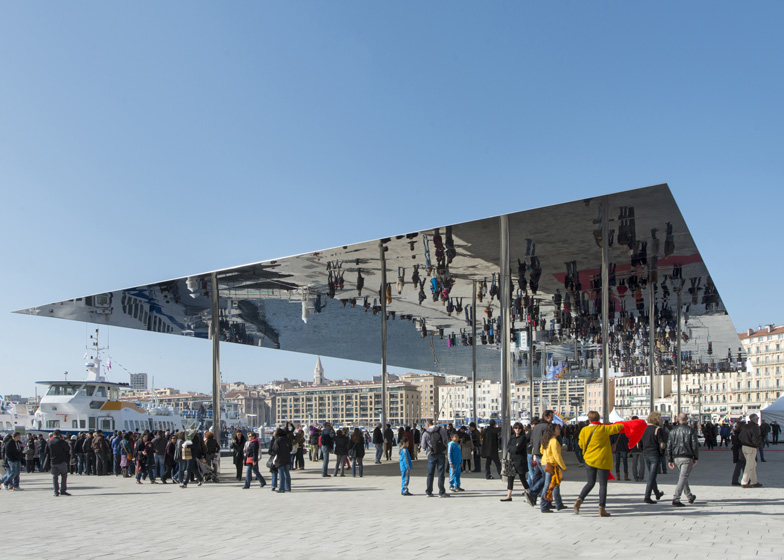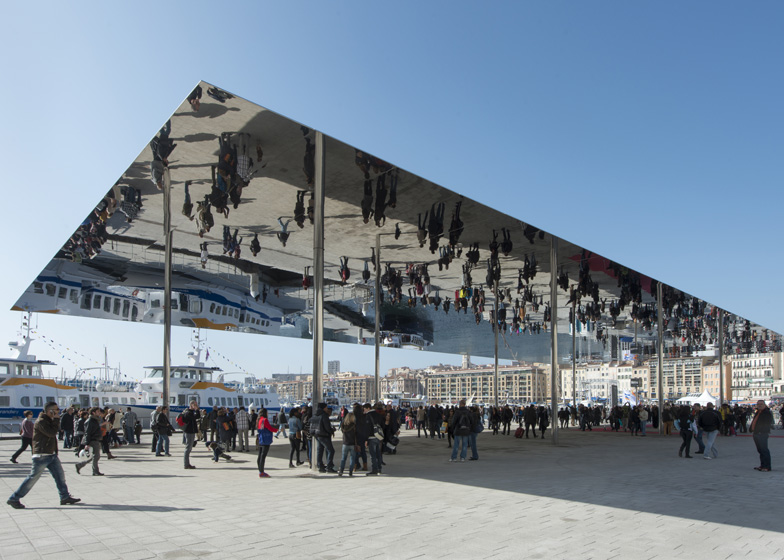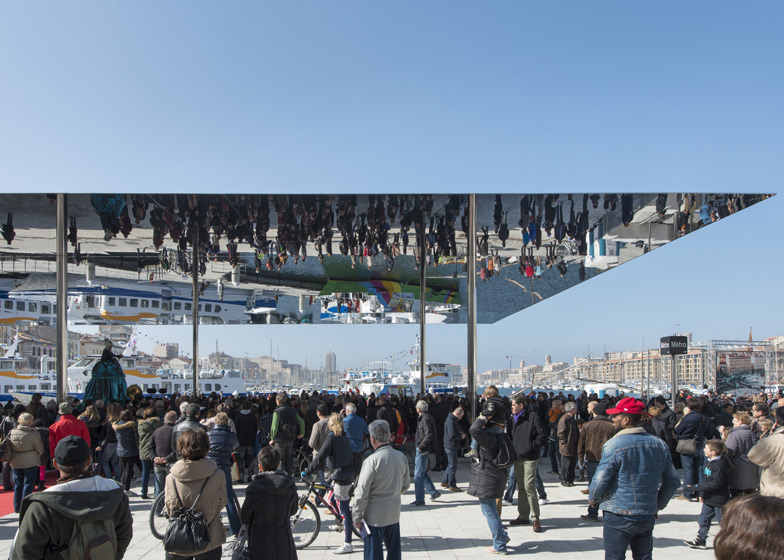A polished steel canopy reflects visitors walking underneath at this events pavilion in Marseille's harbour by UK firm Foster + Partners (+ slideshow).
Supported by eight slender columns, the stainless-steel structure stretches over the paving to create a sheltered events space in the city's Old Port. The roof features sharply tapered edges, creating the impression of a paper-like thickness.
"The new pavilion is quite literally a reflection of its surroundings," explained head of design Spencer de Grey. "Its lightweight steel structure is a minimal intervention and appears as a simple silver line on the horizon."
The Vieux Port pavilion forms part of a masterplan of public realm projects that Foster + Partners has been working on along the seafront of the French city to tie in with its role as European Capital of Culture 2013. Other improvements includes new surfaces, wider pavements and a series of nautical pavilions.
"Our aim has been to make the Vieux Port accessible to all," said De Grey. "The project is an invitation to the people of Marseille to enjoy and use this grand space for events, markets and celebrations once again."
The architects worked alongside landscape designer Michel Desvigne, who added granite paving to complement the original limestone cobbles. They also collaborated with local firm Tangram Architectes to deliver the structure.
London-based Foster + Partners has also released plans for several new projects in recent months. Others include a concept to 3D print buildings on the moon and a renovation of New York Public Library's flagship branch. See more projects by Foster + Partners.
Photography is by Nigel Young.
Here's a project description from Foster + Partners:
President of Marseille leads opening celebrations for new Vieux Port pavilion
The transformation of Marseille's World Heritage-listed harbour was officially inaugurated on Saturday during a ceremony attended by Eugène Caselli, President of Marseille Provence Métropole and Jean-Claude Gaudin, the Mayor of Marseille. The event marked the completion of the new 'club nautique' pavilions and a new sheltered events space on the Quai de la Fraternité at the eastern edge of the port, built to commemorate the city's year as 'European Capital of Culture'.
The new events pavilion is a simple, discreet canopy of highly reflective stainless steel, 46 by 22 metres in size, open on all sides and supported by slender pillars. Its polished, mirrored surface reflects the surrounding port and tapers towards the edges, minimising its profile and reducing the structure's visual impact.
Reclaiming the quaysides as civic space and reconnecting the port with the city, the boat houses and technical installations that previously lined the quays have been moved to new platforms and clubhouses over the water. The pedestrian area around the harbour has been enlarged and traffic will be gradually reduced over the coming years to provide a safe, pedestrianised environment that extends to the water's edge.
The landscape design, which was developed with Michel Desvigne, includes a new pale granite surface, in the same shade as the original limestone cobbles. The simple, hard-wearing, roughly textured materials are appropriate to the port setting, and to improve accessibility for all, kerbs and level changes have been eliminated.




